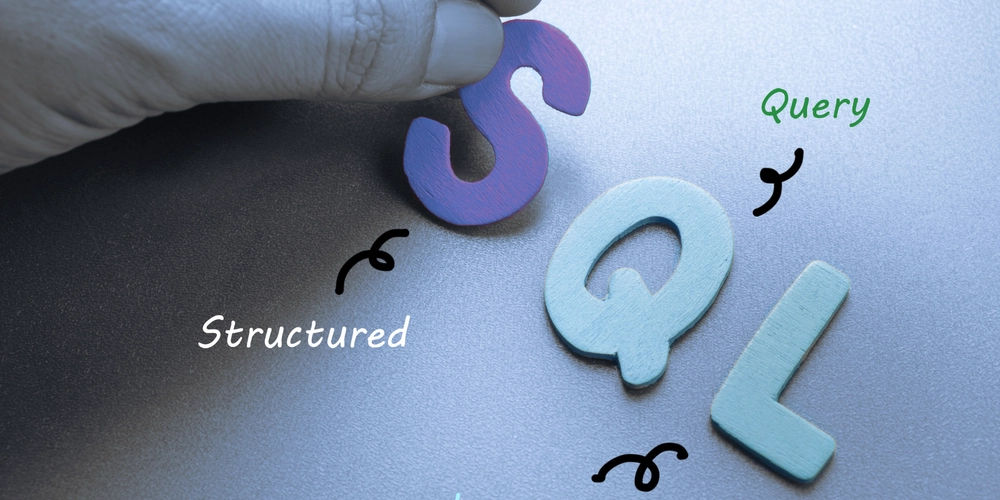Web Scraping to SQL: How to Effectively Store and Analyze Your Scraped Data
I've always enjoyed working with data. Extracting information from websites through web scraping feels a bit like digital treasure hunting—you sift through endless pages of content, capturing exactly what you need. But getting the data is only half the battle. The real value lies in how effectively you can store, organize, and analyze that scraped information. That’s exactly why I turned to using SQL databases. In fact, Web Scraping to SQL has become my go-to workflow for making sense of large, messy data piles. Over the years, I've realized that while collecting data with web scraping tools is easy, managing it smartly requires careful planning. Today, I'll share why Web Scraping to SQL databases is an incredibly effective method, how I set it up, and some best practices I’ve learned along the way—plus, how I leverage Crawlbase’s Smart Proxy to streamline the scraping process securely and efficiently. Why Web Scraping to SQL Makes Sense Initially, I stored scraped data in CSV or JSON files. But as projects grew, these files became overwhelming. Imagine manually filtering through tens of thousands of records in Excel—nightmare, right? This is where SQL shines. When transitioning from simple files to structured SQL databases, you gain powerful advantages: Structured Data Storage: SQL databases store information in clearly defined tables, making your data neatly organized. Efficient Querying: Complex queries become effortless with SQL. You can filter, sort, and retrieve records with just a few lines of code. Data Integrity and Security: SQL databases provide robust constraints (like primary keys and unique identifiers) and built-in security layers, protecting your data from corruption or unauthorized access. Scalability: SQL databases smoothly scale from hundreds to millions of records, handling large-scale web scraping projects easily. After seeing these benefits firsthand, I never looked back. Web Scraping to SQL databases became a cornerstone of my data strategy. Choosing the Right SQL Database When moving from raw scraped data to SQL, the first decision you'll make is selecting your database. Here's how I approach it: SQLite: Perfect for smaller projects or prototypes. It's lightweight and requires no additional server installation. MySQL: Ideal for larger-scale web scraping projects or web applications. It's highly reliable and performs well even with millions of records. PostgreSQL: Best for complex data analysis, offering advanced data types and powerful querying capabilities. Most often, I choose MySQL for large projects because of its speed and scalability. But for quick experiments, SQLite is unbeatable. Setting Up an SQL Database for Web Scraping Creating a database might sound intimidating if you're new, but it's surprisingly straightforward. Here's a quick overview: Installing Your Database For MySQL (on Ubuntu): sudo apt update sudo apt install mysql-server sudo mysql_secure_installation Once installed, create a database and a user specifically for your web scraping project. CREATE DATABASE scraped_data; USE scraped_data; CREATE TABLE products ( id INT PRIMARY KEY AUTO_INCREMENT, product_name VARCHAR(255), price DECIMAL(10,2), product_url TEXT, scraped_at TIMESTAMP DEFAULT CURRENT_TIMESTAMP ); With just these simple commands, your database is ready to store scraped data securely. Connecting Your Web Scraping Tools to SQL Next step—connecting Python, my preferred language for scraping, to the SQL database. This is simple with Python libraries like mysql-connector-python: import mysql.connector conn = mysql.connector.connect( host="localhost", user="your_username", password="your_password", database="scraped_data" ) cursor = conn.cursor() Now your scraping setup can insert data directly into your SQL database, streamlining your workflow beautifully. How Crawlbase Smart Proxy Streamlines Web Scraping to SQL Now, let's get real for a second: web scraping isn't always easy. Websites have CAPTCHAs, IP blocking, and complex dynamic content. Here’s my little secret: I use Crawlbase’s Smart Proxy to tackle these issues effortlessly. Crawlbase’s Smart Proxy isn't your standard proxy server—it blends proxy rotation with artificial intelligence to bypass CAPTCHAs, avoid IP blocks, and handle complex JavaScript rendering. Essentially, Smart Proxy takes away all the headaches from scraping so you can focus purely on getting valuable data directly into your SQL database. Here's how easy it integrates into your scraping workflow: import requests API_KEY = "your_crawlbase_api_key" target_url = "https://example.com/products" response = requests.get( f"https://api.crawlbase.com/?token={API_KEY}&url={target_url}&proxy=true" ) if response.status_code == 200: html_content = response.text # Now you can parse the HTML content and store it in SQL directly

I've always enjoyed working with data. Extracting information from websites through web scraping feels a bit like digital treasure hunting—you sift through endless pages of content, capturing exactly what you need. But getting the data is only half the battle. The real value lies in how effectively you can store, organize, and analyze that scraped information. That’s exactly why I turned to using SQL databases. In fact, Web Scraping to SQL has become my go-to workflow for making sense of large, messy data piles.
Over the years, I've realized that while collecting data with web scraping tools is easy, managing it smartly requires careful planning. Today, I'll share why Web Scraping to SQL databases is an incredibly effective method, how I set it up, and some best practices I’ve learned along the way—plus, how I leverage Crawlbase’s Smart Proxy to streamline the scraping process securely and efficiently.
Why Web Scraping to SQL Makes Sense
Initially, I stored scraped data in CSV or JSON files. But as projects grew, these files became overwhelming. Imagine manually filtering through tens of thousands of records in Excel—nightmare, right?
This is where SQL shines. When transitioning from simple files to structured SQL databases, you gain powerful advantages:
Structured Data Storage: SQL databases store information in clearly defined tables, making your data neatly organized.
Efficient Querying: Complex queries become effortless with SQL. You can filter, sort, and retrieve records with just a few lines of code.
Data Integrity and Security: SQL databases provide robust constraints (like primary keys and unique identifiers) and built-in security layers, protecting your data from corruption or unauthorized access.
Scalability: SQL databases smoothly scale from hundreds to millions of records, handling large-scale web scraping projects easily.
After seeing these benefits firsthand, I never looked back. Web Scraping to SQL databases became a cornerstone of my data strategy.
Choosing the Right SQL Database
When moving from raw scraped data to SQL, the first decision you'll make is selecting your database. Here's how I approach it:
SQLite: Perfect for smaller projects or prototypes. It's lightweight and requires no additional server installation.
MySQL: Ideal for larger-scale web scraping projects or web applications. It's highly reliable and performs well even with millions of records.
PostgreSQL: Best for complex data analysis, offering advanced data types and powerful querying capabilities.
Most often, I choose MySQL for large projects because of its speed and scalability. But for quick experiments, SQLite is unbeatable.
Setting Up an SQL Database for Web Scraping
Creating a database might sound intimidating if you're new, but it's surprisingly straightforward. Here's a quick overview:
Installing Your Database
For MySQL (on Ubuntu):
sudo apt update
sudo apt install mysql-server
sudo mysql_secure_installation
Once installed, create a database and a user specifically for your web scraping project.
CREATE DATABASE scraped_data;
USE scraped_data;
CREATE TABLE products (
id INT PRIMARY KEY AUTO_INCREMENT,
product_name VARCHAR(255),
price DECIMAL(10,2),
product_url TEXT,
scraped_at TIMESTAMP DEFAULT CURRENT_TIMESTAMP
);
With just these simple commands, your database is ready to store scraped data securely.
Connecting Your Web Scraping Tools to SQL
Next step—connecting Python, my preferred language for scraping, to the SQL database. This is simple with Python libraries like mysql-connector-python:
import mysql.connector
conn = mysql.connector.connect(
host="localhost",
user="your_username",
password="your_password",
database="scraped_data"
)
cursor = conn.cursor()
Now your scraping setup can insert data directly into your SQL database, streamlining your workflow beautifully.
How Crawlbase Smart Proxy Streamlines Web Scraping to SQL
Now, let's get real for a second: web scraping isn't always easy. Websites have CAPTCHAs, IP blocking, and complex dynamic content. Here’s my little secret: I use Crawlbase’s Smart Proxy to tackle these issues effortlessly.
Crawlbase’s Smart Proxy isn't your standard proxy server—it blends proxy rotation with artificial intelligence to bypass CAPTCHAs, avoid IP blocks, and handle complex JavaScript rendering. Essentially, Smart Proxy takes away all the headaches from scraping so you can focus purely on getting valuable data directly into your SQL database.
Here's how easy it integrates into your scraping workflow:
import requests
API_KEY = "your_crawlbase_api_key"
target_url = "https://example.com/products"
response = requests.get(
f"https://api.crawlbase.com/?token={API_KEY}&url={target_url}&proxy=true"
)
if response.status_code == 200:
html_content = response.text
# Now you can parse the HTML content and store it in SQL directly
This simple approach allows you to seamlessly crawl a website without worrying about getting blocked or having to manually handle proxies. With Smart Proxy, Web Scraping to SQL becomes smooth and efficient.
Efficiently Inserting Scraped Data into SQL
Let’s say you've crawled a website and obtained a list of products with their names, prices, and URLs. Here’s how to insert that data into your SQL database:
scraped_data = [
("Laptop Model A", 1299.99, "https://example.com/laptop-a"),
("Laptop Model B", 999.99, "https://example.com/laptop-b"),
# more data...
]
insert_query = "INSERT INTO products (product_name, price, product_url) VALUES (%s, %s, %s)"
cursor.executemany(insert_query, scraped_data)
conn.commit()
cursor.close()
conn.close()
Just like that, your scraped data is safely stored in your database, ready for analysis.
Analyzing Your Scraped Data with SQL Queries
Web Scraping to SQL isn't complete without insightful data analysis. SQL makes extracting insights from data incredibly intuitive:
Filter and sort data: Find affordable products quickly.
SELECT product_name, price
FROM products
WHERE price < 1000
ORDER BY price ASC;
Aggregate data: Get useful statistics about your scraped products.
SELECT COUNT(*) AS total_products, AVG(price) AS average_price
FROM products;
**Join tables for deeper insights: **Connect different tables to enrich analysis (imagine a category table).
SELECT p.product_name, c.category_name
FROM products AS p
INNER JOIN categories AS c ON p.category_id = c.id;
SQL’s ability to effortlessly slice, dice, and present data clearly is a game changer for decision-making.
Best Practices for Web Scraping to SQL
Here are essential tips I've learned to keep your Web Scraping to SQL workflow efficient and robust:
Batch Inserts: Insert data in batches to reduce transaction overhead and enhance performance.
Index Your Database: Use indexing strategically on columns you frequently query to speed up analysis.
Data Cleaning: Always clean your scraped data before insertion—remove duplicates, normalize text, and validate URLs.
Automate the Workflow: Automate your scraping and database updates with cron jobs or scheduled tasks to ensure consistent data freshness.
Securing Your Data and Workflow
While web scraping is incredibly powerful, always remember data ethics and security. SQL databases offer built-in mechanisms such as role-based access controls, encrypted connections, and user authentication:
GRANT SELECT ON scraped_data.products TO read_only_user;
By properly managing permissions, you ensure your data stays safe and accessible only to authorized users.
Wrapping It All Together: Why Web Scraping to SQL Just Works
Using SQL databases to store and analyze scraped data has transformed the way I work. The structured storage, rapid querying capability, and scalability SQL provides are unmatched. And when paired with robust web scraping tools like Crawlbase's Smart Proxy, it makes data collection and analysis seamless and highly efficient.
Whether you’re monitoring competitors, tracking product prices, or conducting research, Web Scraping to SQL ensures your data remains structured, secure, and ready for action. If you're serious about maximizing your data's potential, setting up a solid Web Scraping to SQL workflow should definitely be your next step.
To further enhance your workflow, check out this helpful guide on storing and analyzing scraped data effectively in SQL: Web Scraping to SQL: Store and Analyze Data.
With this approach, scraping data isn't just about collecting—it’s about unlocking actionable insights efficiently, securely, and intelligently.














































































































































































![[The AI Show Episode 156]: AI Answers - Data Privacy, AI Roadmaps, Regulated Industries, Selling AI to the C-Suite & Change Management](https://www.marketingaiinstitute.com/hubfs/ep%20156%20cover.png)
![[The AI Show Episode 155]: The New Jobs AI Will Create, Amazon CEO: AI Will Cut Jobs, Your Brain on ChatGPT, Possible OpenAI-Microsoft Breakup & Veo 3 IP Issues](https://www.marketingaiinstitute.com/hubfs/ep%20155%20cover.png)












































































































































































































































.jpg?width=1920&height=1920&fit=bounds&quality=70&format=jpg&auto=webp#)

























_Michael_Burrell_Alamy.jpg?width=1280&auto=webp&quality=80&disable=upscale#)

























































































































































































